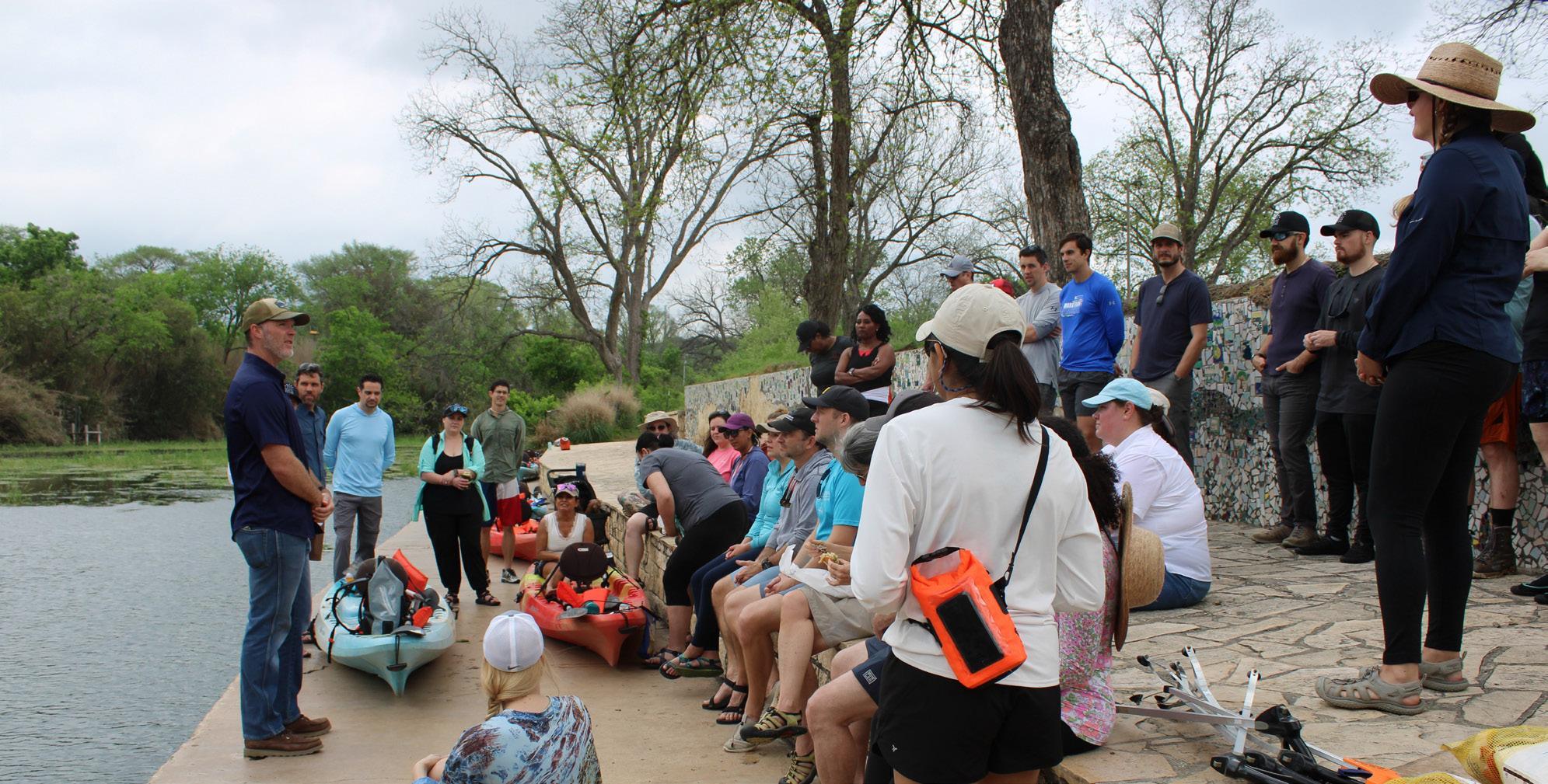
Members of the various classes of the TWF’s Texas Water Leaders program gather in preparation for the paddle event held March 31.
Daily Record photos by Barbara Audet
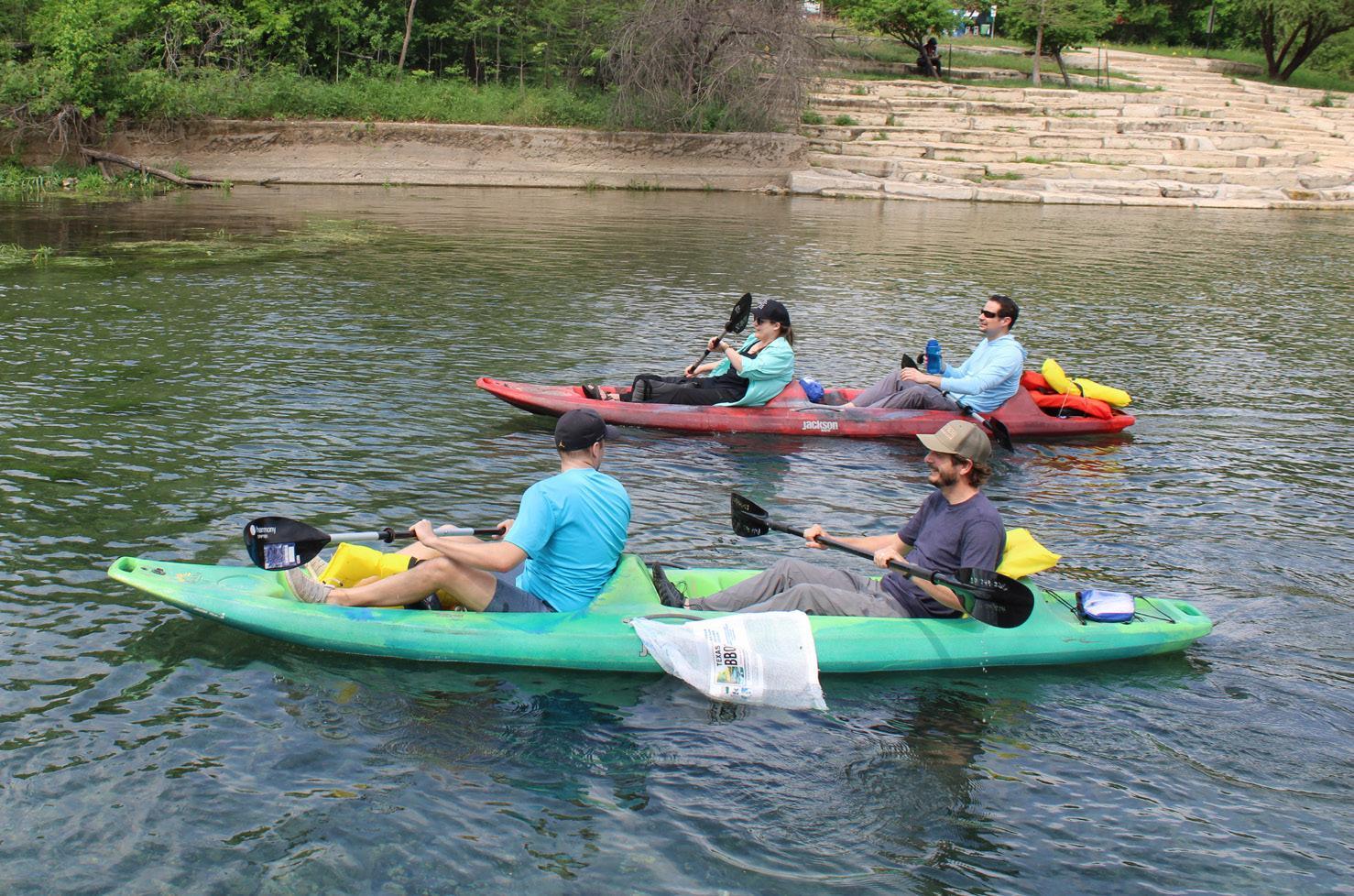
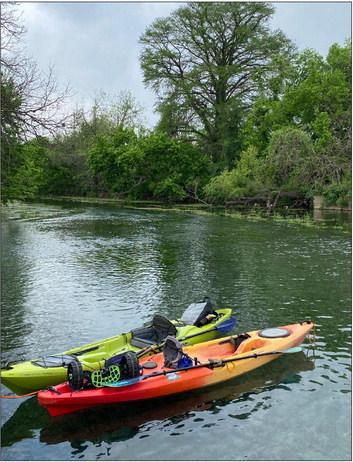
Kayaks enter the water in advance of the Fourth Annual Texas Water Leaders Paddle event held March 31.
Daily Record photo by Barbara Audet
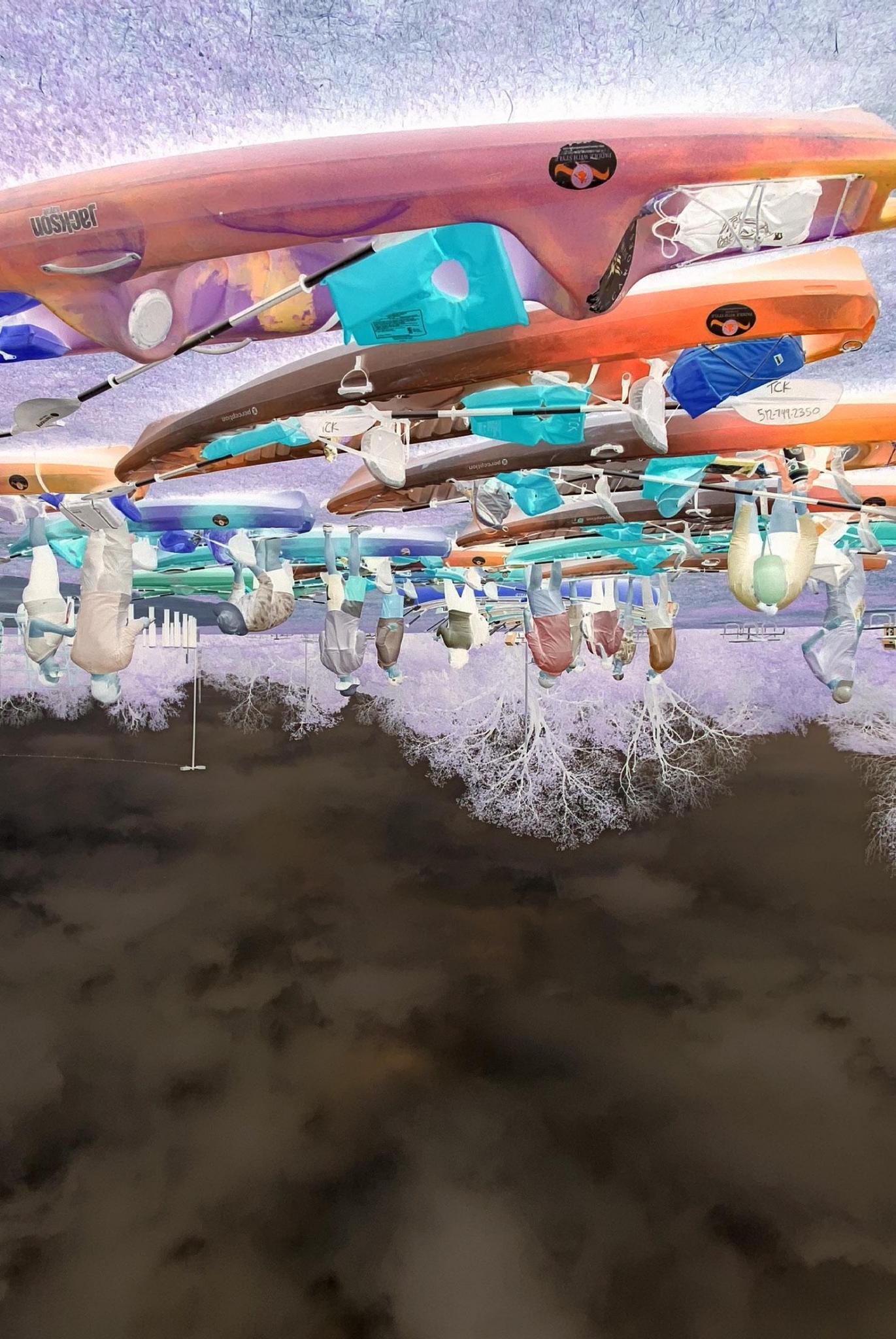
Some of the 50 new class members and alum separate into flotillas in advance of their taking these kayaks out on the San Marcos River.
Daily Record photo by Barbara Audet
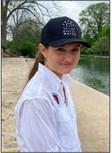
Sarah Rountree Schlessinger CEO of the Texas Water Foundation
WATER SECURITY
Texas Water Foundation gets hands-on to learn about the San Marcos River
This is Part Two of a series highlighting the efforts of the Texas Water Foundation and the Edwards Aquifer Authority with respect to water issues in Central Texas.
A day spent paddling the river in San Marcos for most is merely time devoted to exercise and relaxation or seeing the sights. This spring, though, a group of paddlers went out on the water with higher intentions, the kind meant to draw attention to water security and an increased need for others like themselves to tackle environmentally- centered careers in years to come.
Sarah Rountree Schlessinger, CEO of the Texas Water Foundation, welcomed close to 50 new and alumni members of its Texas Water Leaders program as well as guests with expertise in a wide array of water-related disciplines including utilities, legal experts and nonprofit leaders.
For her, training a new set of leaders to acquire a mutual knowledge of water safety and their role in its security was inspired by the fact that in Texas and much of the United States, there is a rapidly aging water infrastructure.
“That’s what today’s about,” she said.
This day, March 31, was couched therefore in what she alluded to was the broader conversation–the challenges the state is facing with regard to water.
“We’ve got an aging and fragile infrastructure which means that it is under tremendous stress,” she said. “We are losing a lot of water in the system because it is depreciating and falling apart. And that just means a lot of additional pressure on the folks that are maintaining those systems. I don’t think there’s an appreciation for how much water leaders across the sectors take on, to try and maintain basic water security and we’re really proud that this program supports them.”
Schlessinger said much “of our infrastructure was built by federal grants in the 50s and 60s.”
“A lot of that infrastructure across the county is about the same age,” she said.
For much of Central Texas, and particularly the Hill Country, the exponential growth in population and building has placed additional, uncharted ecological pressure on a sensitive and unique water zone.
Schlessinger, an expert in groundwater policy and regulation with experience with international nonprofits and disaster response, qualified that dilemma by looking at the problem through a longer lens.
“We’ve always had issues. Texas’s history is just one long drought punctuated by disastrous flood. Our history is shaped by that,” she said. All of which means that a proactive and comprehensive set of identified problems and suggested real solutions is necessary to protect water resources for all.
The program she leads through the foundation is the Texas Water Leaders, launched in March 2020 with a key first objective to provide new and well trained water resources leadership in the years going forward. The Texas Water Leadership Certification they gain will empower these emerging leaders as they expand their skills to become a part of a network of professionals.
She said her organization provides a “leadership program that connects them across various disciplines,” with specific training in public speaking, conflict resolution, and understanding equity issues in water. The program provides about seven months of training and leader interaction.
With the significant number of environmental issues in Texas, “in terms of supply, in terms of water quality, in terms of drought, in terms of population demand,” one of the largest to contend with is the human one, the workforce, she said.
“We have about a third of the sector expected to retire in the next few years,” she said, adding this is compounded by non-competitive wages– some of the lowest comparatively in the nation, which impacts retention.
“We’re really proud today,” that this group of alumni and new program participants is doing something that bonds them and is a visual example of the human infrastructure, the desire to have succession planning in place, she said. This Friday with the river paddle event, with the water, only unchecked except by the intricacies of the river, this cohort of water leaders symbolically move forward personally and as a group of professionals.
Schlessinger said it is the human infrastructure that “keeps this water system resilient.”
One by one, kayaks and canoes were picked up and carried down the stairs leading to a launching area. Here the members had a safety briefing and learned quickly about the concept of portaging and going around one of the river’s dams in flotilla clusters of about four to five boats each.
As the group lifted the kayaks and canoes and set them at the water’s edge, Schlessinger introduced the paddlers to be to Dr. Chad Furl who would discuss the pristine system of the aquifer is managed.
Furl is chief science officer at the Edward’s Aquifer Authority, Habitat Conservation Plan, and has been with the authority since 2016. He was raised in Central Texas and has degrees from Baylor University and a doctorate from the University of Texas at San Antonio in environmental engineering.
In an approximately 20-minute explanation, Furl without visual assistance except for the river in back of him, brought up several key topic areas.
“I wanted to start it quickly about where we are,” he said. “You all find yourselves on the Upper San Marcos River and you’ll be paddling today on the waters emanating from the Edwards Aquafir just up stream from Aquarena or Spring Lake, whatever you want to call it. That is the second largest spring complex in the Southwest United States.” The first largest is Comal Springs, also part of the Edwards Aquifer, he explained.
“This spring complex, [is] obviously hugely important,” Furl said, noting that people have been using it as source of life for thousands of years.
Unique in terms of hydrology and geology, the Edwards Aquifer is a karst aquifer which means it is fundamentally a landscape with a foundation of limestone that over now millions of years is characterized by its being eroded by dissolution of the bedrock–a process which created ridges, towers, fissures, sinkholes and landforms such as caves, springs and sinking streams that allow for water retention.
The aquifer covers small to large areas in Kinney, Uvalde, Zavala, Medina, Frio, Atascosa, Bexar, Comal, Guadalupe and Hays counties, and is approximately 180 miles long and from five to 40 miles wide, with an estimated surface area of some 3,600 square miles.
Furl said the aquifer starts about as far west as Brackettville, west of Uvalde, runs along Highway 90, ends up along I-35 and is actually kind of an extension of the Ouachita Mountains in Oklahoma.
“The water-bearing portion kind of peters out north of Austin,” he said. The thickest portion of the limestone where the water is, is in the San Antonio footprint, where head [the water at the surface] is greatest and one finds the most pressure, historically. Where people and municipality do source the water, is on approximately 1,250 square miles of the Edwards limestone, and specifically those areas that are “exposed at the ground surface” and form what is called the Recharge Zone where water enters the aquifer. Currently, when levels are lower, a solid series of rains or a hurricane have the potential to recharge the aquifer. The problem is growth threatens the exposed rechargeable land areas.
The Edwards Aquifer is the primary water source for much of Central Texas, including the City of San Antonio and its surrounding communities. Historically, the cities of Uvalde, San Antonio, New Braunfels and San Marcos were founded around large springs discharging from the Aquifer.
Furl said, “Back before we punched a lot of holes in the aquifer some said it was the most prolific aquifer in the world.” Controlled punching is now part of the regulation that oversees the use of the aquifer.
Where the aquifer intersects the surface of the earth–artesian flow–pressure is what is pushing the water out into the surface of the rivers, San Marcos for example, he said.
“It’s an incredible hydrogeological system,” he said, impacted powerfully now by the growth taking place in business and population in Central Texas. This growth calls for the community to be actively involved in the preservation of the aquifer and protecting its ability to be a sustaining resource.
Many geologists, hydrologists and engineers have spent their careers working to understand the aquifer over the last hundred years providing a rich history to build on, Furl said. There’s a lot of information there that sets up for “the people story, the biological story.”
He mentioned the number of endangered and threatened species that live within the surface areas of the aquifer and he hoped those on the river on this day would take note of what to protect and maintain.
“We talk kind of narrowly in our program about the 11 threatened and endangered species that we manage,” but when others come in and cast a new eye on the area, they uncover new species of animals and plants regularly, Furl said. Blind catfish, salamanders, plants–just a few examples of the lifeforms with which people co-exist daily here.
“It’s incredible the amount of biological diversity that exists in this aquifer,” he said.











